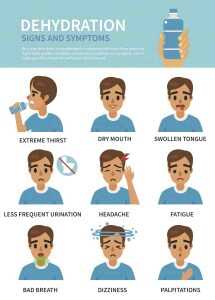
Diabetes Mellitus describes a condition in which your body is no longer capable of successfully balancing your blood sugar. This is the most common type of diabetes and accounts for most of the cases of both Type 1 and Type 2 diabetes. There is another type of diabetes, however, that does not present with the same symptoms called Diabetes Insipidus.
Diabetes Insipidus: An Overview
Unlike its peer, this type of diabetes is not characterized by blood sugar troubles but kidneys problem. Instead of your body being unable to properly use food and create or disperse insulin, your kidneys are unable to properly filter liquids, which can lead to urine output between 3 to 20 quarts per day. This type of inefficiency prompts the need to drink constantly and can give the feeling of perpetual cottonmouth.
The greatest source of danger is dehydration. Many men and women with the condition do not recognize the symptoms and fail to adequately rehydrate. The failure to drink enough fluids can lead to dehydration and a list of symptoms such as dizziness and confusion. In some cases, it can even cause organs to shut down and death.

Fortunately, insipidus is not typically a fatal condition. It can accompany diabetes mellitus, or it can exist as its own condition.
Diagnosis and Treatment
The first step in determining if diabetes insipidus is lurking in your body is to evaluate your urinating habits. If you find yourself constantly needing a restroom, suffering from chronic dry skin, or experiencing extreme thirst, it is entirely possible this type of diabetes is the source. Diagnosis typically relies on a thorough review of symptoms, family history, and both blood testing and urinalysis.
Treatment levels vary, just as they do with diabetes mellitus. For some, simply upping their intake of fluid is enough to keep the body safely away from dehydration. For others, hormonal intervention is needed to coax the kidneys into working properly. Finally, correcting a nutrient imbalance in the body may just do the trick.
Moving Forward
Diabetes mellitus is growing increasingly common while insipidus remains in the background. The two can have similar symptoms, including constant urination, increased thirst, dry skin, and fatigue. Fortunately, insipidus is extremely treatable and does not usually bear the long-term consequences of diabetes mellitus.
ReferencesMayo Clinic. Accessed 8/20/17.
NIH. Accessed 8/20/17.
